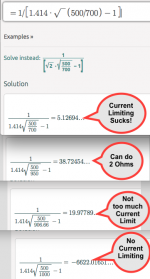Concerning damping factor (DF). It’s not a secret that DF can be different in various frequency bands. Most commonly the manufacturers give it at 1kHz or so and almost never in lows. However we know that one amp can give very good sound in the bass band and other can produce very doll sound with the “one-note bass” so we can imagine that the amp has very small DF. Especially this concerns to the amps with conventional power supply. We can conclude that this “df” in lows depends on energetic behavior of power supply. I propose the formula for evaluation the behavior of amps in low frequencies which could be helpful for selecting amp for driving for example subwoofers. It uses only two honest specs which are presented in every manual for each amp: rms power at 8 and 4 Ohms loads.
Kd=1/[1.414*SqR(P8/P4)-1] and which must be more then 20 (the more the better).
Let P8=500 and P4=700, then Kd=5.13.
And P8=500, P4=950, then Kd=38. Second amp is better.
Of coarse losses in cabling must be as minimal as possible,
This formula is proven by my practice.
Kd=1/[1.414*SqR(P8/P4)-1] and which must be more then 20 (the more the better).
Let P8=500 and P4=700, then Kd=5.13.
And P8=500, P4=950, then Kd=38. Second amp is better.
Of coarse losses in cabling must be as minimal as possible,
This formula is proven by my practice.


